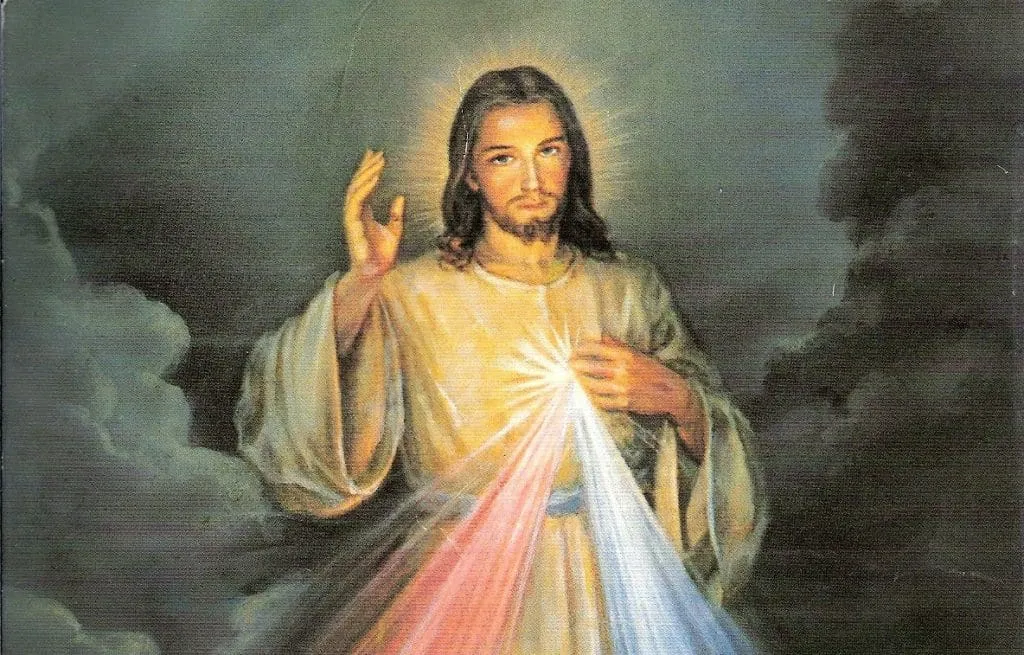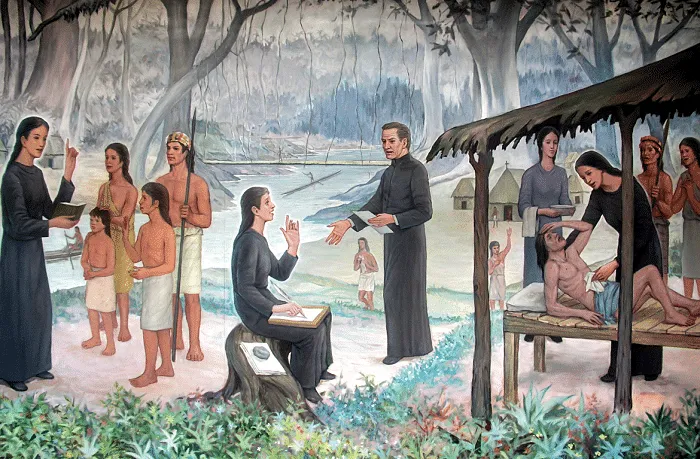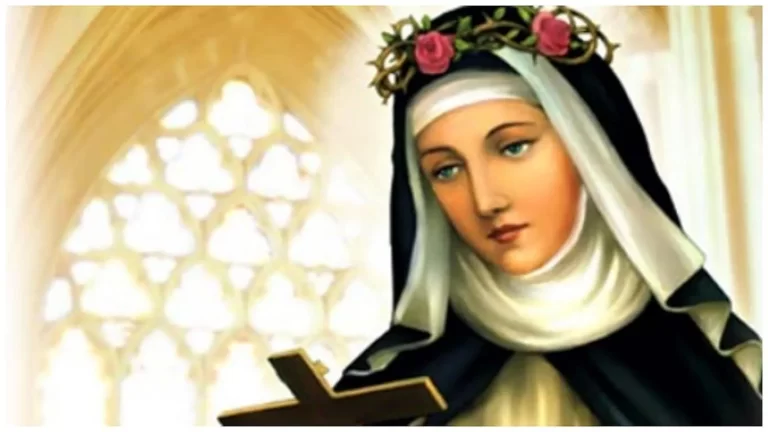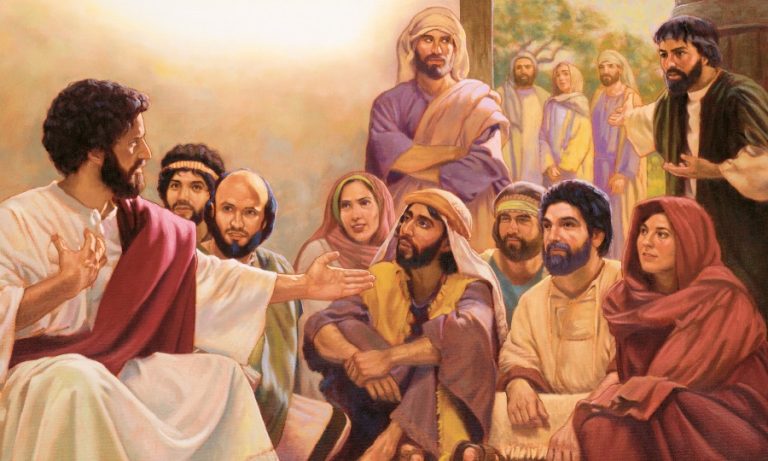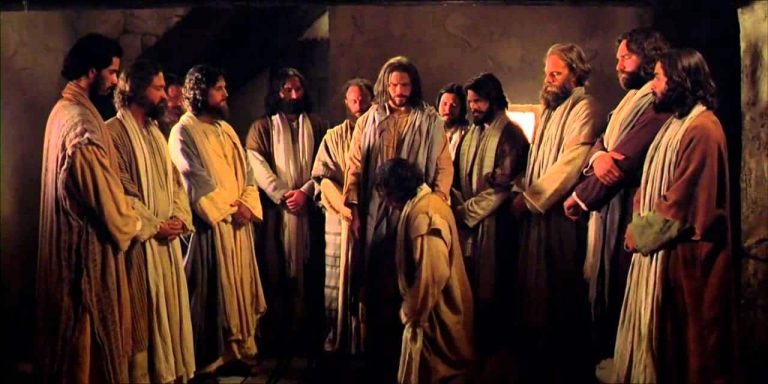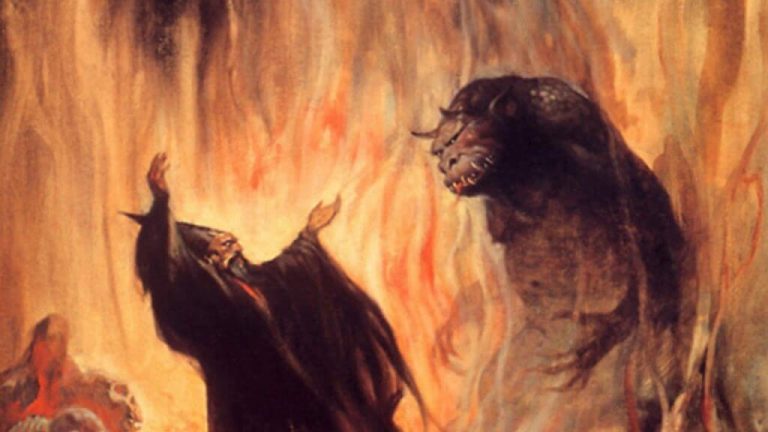The Mighty Crown of Divine Mercy
In today’s article we will teach you what the prayer of the Chaplet of Divine Mercy is. At the same time, we will indicate the different steps you must follow to perform the prayer correctly. We will also delve a little into the history of this prayer, how it arises, what it means, what it is used for, the images that identify it and much more. Here we will give you all the information you need to know about this topic.
Crown of Divine Mercy
The prayer of the Crown of Divine Mercy is dedicated to being prayed mainly for those people who are on their deathbed, when they are very sick or dying and even when the person has already passed away. Even in these last cases the prayer works, we cannot forget that the soul of the person remains a short period of time after his death until he manages to separate from the body.
In addition, spirituality and faith in Jesus facilitates this separation of the soul from the body, so that in atheist or agnostic people the soul is more resistant to leaving the body because it is not aware of what is happening and has no idea what What is going to happen. Believing that everything ends with death is a great surprise for the recently deceased, which makes it easier for their family and friends to help them with the transition through the prayer of the Divine Mercy Crown.
Having said the above, it is clear that the purpose of this prayer is to help people find redemption and pave the way for them to achieve salvation and continue with what lies ahead. In any case, these situations are not easy because we are talking about the loss of a loved one and the first actions to take are always to communicate and spread the death of the person.
But this does not mean that we must put aside our responsibility, so we must pray with the dying or deceased as soon as we have the opportunity to pray the Crown of Divine Mercy, since it is a way of telling the mourner that Jesus promises to come and save it. After praying this prayer, it is recommended to continue with the Holy Rosary of the Blessed Virgin.
If the person who is sick or on their deathbed is an agnostic or atheist, it is advisable to approach him or her and tell them about the prayer of the Chaplet of Mercy . Because even if the person is not sure about what he believes, praying the prayer will help them open their hearts to let Jesus in and have a conversation where they can get eternal forgiveness. For something Jesus tells us to remember his promise, where he as judge and savior is willing to forgive us for our sins committed if we are able to repent of our sins.
Regarding the most suitable time to read the prayer, it is recommended to do it at three in the afternoon and help yourself using the rosary beads.
Steps to Perform the Divine Mercy Prayer
If you want to make the rosary of mercy or the chaplet of Divine Mercy but you don’t know how to do it, don’t worry; Here we will explain how to do it step by step. The first thing you should know is that you will need to have an ordinary five decade rosary. On the other hand, the Chaplet of Divine Mercy is made after making two opening prayers that belong to the diary of Santa Faustina and to culminate, a final prayer must be made. Here are all the steps you must follow to perform the prayer correctly:
- Step 1 : Make the Sign of the Cross. The people who are present and participate in the prayer must make the sign of the cross and say: “By the sign of the Holy Cross, deliver us Lord God from all our enemies. Amen”.
- Step 2 : It begins with the large rosary bead and two prayers are made (which may be additional). These prayers must allude to Divine Mercy, but there are not two specific ones that are exclusive. Here are two suggestions for you to use, but at the end of the article you will find other additional sentences that you can use as a replacement for any of these if you wish:
- « You expired Jesus, but the source of life welled up for souls and an ocean of mercy was opened for the whole world. Oh source of life, inexhaustible divine mercy, envelop the whole world and empty yourself on us « .
- “ Oh blood and water that flowed from the heart of Jesus as a source of mercy for us, Jesus, I trust in you . “
- Step 3 : Now you must proceed with the small number one bead and pray an “Our Father”:
- Our Father in heaven, hallowed be your name, your kingdom come, your will be done, on earth as it is in heaven. Give us today our daily bread, forgive our offenses, as we forgive those who offend us, do not lead us into temptation and deliver us from evil. Amen « .
- Step 4 : Once you have finished with count one, you continue with small count two praying a “Hail Mary”:
- « God save you Mary, you are full of graces, the Lord is with you, you are blessed among all women and blessed is the fruit of your womb, Jesus. Holy Mary, mother of God, pray for us sinners, now and at the hour of our death. Amen. «
- Step 5 : We continue with the small bead three and now we pray a «Creed».
- « I believe in God, almighty father, creator of heaven and earth. I believe in Jesus Christ the only son of him our Lord, who was conceived by the work and thanks of the Holy Spirit. He was born of the Virgin Mary, suffered under the power of Pontius Pilate, was crucified, died and was buried, descended into hell, rose from the dead on the third day, ascended into heaven and is seated at the right hand of God the Father, all powerful. From there he will come to judge the living and the dead. I believe in the holy spirit, the holy catholic church and the communion of saints, the forgiveness of sins, the resurrection of the body and eternal life. Amen « .
- Step 6 : When every fifth large bead of every ten is reached, an “Eternal Father” must be prayed:
- “ Eternal Father, I offer you the body, blood, soul and divinity of your beloved son, our Lord Jesus Christ, as atonement for our sins and those of the whole world . “
- Step 7 : For each account ten of each decade, the prayer “For his Sorrowful Passion” should be prayed:
- “ For his sorrowful passion, have mercy on us and on the whole world . “
- Step 8 : Now each prayer cycle must be repeated another four times, thus completing all the beads of the rosary including the prayers of the “Eternal Father” and “For his Sorrowful Passion”.
- Step 9 : After completing the five tens, the final doxology should be prayed a total of three times. But instead of praying the classic “Glory to the father, glory to the son and glory to the Holy Spirit…”, you should pray “Holy God”:
- “ Holy god, holy strong, holy immortal, have mercy on us and on the whole world . “
- Step 10 : To conclude, the following closing sentence must be performed:
- « O eternal God, in whom mercy is infinite and the treasure of compassion inexhaustible, turn to us your kind gaze and increase your mercy in us, so that in difficult moments we do not despair or lose heart, but, with great confidence, we submit to your holy will, which is love and mercy itself. Amen. «
Additional Prayers to Accompany the Divine Mercy Wreath
In addition to the prayers of the Chaplet of Divine Mercy, you can accompany it with any of the following prayers that we will mention below. Although it is advisable that you do them at three in the afternoon and remember, the important thing is to try to spread the devotion:
sentence 1
« The rays that come out of my heart are the symbol of the blood and water that flowed on the day of my sacrifice on the cross. The pale meaning of water, which purifies souls. The red, the blood that gives them life.
To those who praise and spread my great mercy, at the hour of death I will treat them according to my infinite mercy.
Before I come as a just judge, I open wide the doors of my mercy. But whoever does not want to enter the gates of my mercy, he will have to pass through the gates of my justice.
The greater the sin, the greater the right to my mercy. I invite all souls who have hope in the infinite depth of my mercy, because I want to redeem everyone. The source of my mercy was opened wide for all souls on the cross by the spear. I have no one excluded.
At three in the afternoon, implore my mercy especially for sinners and, even for a moment, contemplate my passion; above all the abandonment at the moment of my agony. This is the hour of great mercy for the whole world. In this hour I will not deny anything to the soul that asks for it in memory of my passion. «
sentence 2
« O God, whose mercy is infinite and whose treasures of compassion have no limits, look upon us with your favor and increase your mercy within us, so that in our great anxieties we do not despair, but always with great confidence conform to your most holy will. , which is identical to your mercy, through our Lord Jesus Christ, merciful king. Who with us and the holy spirit shows mercy towards us forever. Amen « .
Prayer 3: Ejaculation
This prayer was entrusted to Sister María Faustina to write and she will pray it periodically:
« Oh blood and water, which flow from the Sacred Heart of Jesus as a source of mercy for us, I trust in you.
By praying this rosary, I am pleased to give whatever is asked of me. Whoever prays it will obtain great mercy at the hour of his death. Even if he is an inveterate sinner, if he prays this rosary, even once, he will obtain the grace of my infinite Mercy « .
Prayer 4: Of Divine Mercy
«O god of great mercy, infinite goodness, from the abyss of its despondency, all humanity today implores your mercy, your compassion, oh god!; and he cries out with the mighty voice of misery.
God of benevolence, do not stop listening to the prayer of this earthly exile. O Lord! Kindness that escapes our comprehension, who knows our misery thoroughly and knows that with our strength we cannot rise to you. We implore you: go ahead with your grace and continue to increase your mercy in us, so that we may faithfully fulfill your holy will throughout our lives and at the hour of death. May the omnipotence of your mercy defend us from the arrows thrown by the enemies of our salvation, so that with confidence, as your children, we await the last coming, a day that only you know. We hope to get what Jesus promised us despite our meanness . ”
Prayers to Pray at 3 in the Afternoon
We also leave you two short prayers that are ideal to pray at three in the afternoon on any day:
- Sentence 1 :
« You expired Jesus, but your death made a spring of life flow for souls and the ocean of your mercy that flooded the whole world. O source of life, unfathomable divine mercy, drown the whole world, shedding on us even your last drop of blood .
- Sentence 2 :
« Oh blood and water that flowed from the heart of Jesus, spring of mercy for us, I trust in you.
When sinners pray this rosary, I will fill their souls with tranquility and the hour of their death will be happy. Fear will not affect you, because my mercy will protect you in this last fight.
If this rosary is prayed in front of the dying, the wrath of God is calmed and his unfathomable mercy takes possession of his soul. When you pray this rosary next to a dying person, I will place myself between the father and the dying soul, not as a just judge, but as a merciful redeemer.
If the dying man can, better pray the rosary. If he can no longer, those who are with him continue to pray it. Priests offer this rosary to sinners, as the last aid.
Jesus promises to grant everything that is asked of him, the grace of conversation and a happy and graceful death. But it is necessary to pray it with repentance for the sins committed, humility, perseverance, devotion and trust « .
Images of Merciful Jesus
In case you haven’t noticed, all the images we’ve seen so far in this article are very similar to each other, the reason being that they all allude to Kazimirowski’s original painting. A painting where we can see the image of Jesus Christ but that gained a lot of fame since at a certain moment in history it was damaged and repainted by other authors. But at the end, the appearance of Jesus’ face changed dramatically, altering the original visual message the painting was intended to convey. On the other hand, this new expression has nothing to do with the original face that Sister Faustina saw.
The reason for this is because the people who carried out the restoration were non-believers and painted the face of Jesus as if he were lost in thought, diminishing the effect that the original gaze had and the message of power that it conveyed. The original painting was supervised by Sister Sister Faustina, but the criticisms come with all the changes that the painting had when it was restored, with the change in the expression of the face being the most resulting characteristic. For this reason it is decided that this painting should not be venerated and that it is better to use the version painted by Hyla (which is the basis of all the images used in this article). To clarify the subject a little here we leave you the history of the two paintings.
For the year 1931, Jesus Christ asked Sister Faustina Kowalska to order a painting of the Jesus of Mercy just like the one she had seen in her apparitions with the message “Jesus I trust in you”. Once finished, he that he will use the image to spread the word about him. In addition, that he founded the feast of mercy on the date of the Sunday after Easter. This is how the sister talks to Father Sopocko and convinces him to commission the painting from Eugeniusz Kazimirowski.
After the painting is finished, sister Sor Faustina dies, and in 1943 the painter Adolfo Hyla makes a painting homologous to Kazimirowski’s work to give it to the sisters as a gift. This painting would surpass the original version in fame and served as protection to prevent the communist regime from destroying the first version made.
The Charge that Jesus Assigned to Sister Faustina
Sister Faustina comments that one night while she was in her cell she had an apparition of Jesus Christ wearing a white tunic. His posture was upright with one hand raised as if he were about to bless, while with the other hand he touched the robe on his chest. At the same time, in the area of his chest, his clothing was ajar and two large rays of light of different colors came out, one red while the other was paler. Faustina, stunned by the presence of the Lord Jesus, remains silent admiring him while she feels overwhelmed by a mixture of feelings of fear and joy. After a few seconds, Jesus begins to speak and tells him to paint a picture of the figure he is seeing with the legend “Jesus, I trust in you.”
In Santa Sor Faustina’s diary you can read that she writes the following about her encounter with Jesus: in principle she indicates that whoever venerates the painting will not perish, she also mentions that Jesus promises her that being on earth she will always obtain victory, mainly when people must face death. In turn, she writes another passage about it where she indicates that Jesus Christ asks her to make a celebration of mercy. Where the painting will be solemnly blessed on the first Sunday after Easter. That day will be known as the day of the feast of mercy.
Jesus also tells him that he must take his message to the priests so that they may be spokesmen for his words and transmit his message so that the people proclaim the great mercy that he has for all the souls of sinners. Thus, everyone who has succumbed to sin should only approach him without fear. All this information was written by the sister on February 22, 1931.
Regarding the painting, the two rays that come out of the chest of Jesus mean blood and water. Where the pale ray is a symbol of water that serves as consolation for souls. Instead; the red ray symbolizes the life of souls. Both rise from his chest as a reflection of the mercy that Jesus has for us and as a symbol of the spear that pierced his heart when he was crucified on the cross. On page 299 of her diary, Sister Faustina Kowalska would write that everyone who lives in their shadow will be blessed, because he will not be reached by the just hand of God.
After the appearance of Jesus and that he will assign her the task of making a painting, she knew immediately that she could not carry out this task that was entrusted to her by her own means due to her lack of skill with painting. In fact, she didn’t even have basic knowledge about artistic creation. Still, this was not an impediment to fulfill the will of god. So she initially tried to paint the picture multiple times by her own means. But seeing the unfavorable results for her, along with the distrust she had of the confessed and her superiors, caused her great suffering.
Still, he never gave up his intention to complete the task despite the fact that three years had passed while he was in Plock and in Warsaw. He always had in his mind the perseverance to fulfill the desire of the Lord Jesus. These feelings of hers helped her to endure her failures and ill-treatment, since she knew how important the mission that she had been entrusted to her was for her divine plans.
After a while he would write in his diary on page 154 that he suddenly saw the Lord Jesus again and told him that if he did not finish his task of painting the picture, nor with the work of mercy that was entrusted to him, when will he arrive? on the day of judgment it would be she who would have to answer for all the souls that could not be saved. In this way she decides to profess her vows in perpetuity and is transferred to the conventual house of Vilna on May 25, 1933. It will be in this place where she would finally get help and consolation from the hand of her confessor and spiritual director: Father Miguel Sopocko who after listening to her decides to heed her requests and fulfill the wishes of the Lord Jesus Christ.
The Image of Jesus that Sister Faustina Observed
After Father Sopocko agreed to his sister’s request to commission a painting of Jesus as she described him, he contacted the painter Eugeniusz Kazimirowski at the beginning of 1934 in the city of Vilnius in Lithuania. In this way I send for him and assign him a room and a study on the same floor where he was.
The picture of the merciful Jesus is given in an environment full of mystery and wrapped in divine miracles, due to the experience that Sister Faustina has with her encounter with Jesus Christ. When Father Miguel Sopocko speaks with Eugeniusz, he tells him only partially about the mission that her sister had and asks him to keep it a secret due to the atmosphere of skepticism that hovered in the environment on this subject. The painter agrees to keep the secret and begins to work on the work.
At the moment of making the painting, Eugeniusz must put aside some of his artistic conceptions to abide by the specifications that Sister Faustina indicates to him about the making of the painting. Every week she visited the painter’s studio to closely follow the progress of the painting and make an occasional indication when the work deviated from his guidelines. This relationship went on like this for about six months, always indicating if it was necessary to add any details or if she had made a mistake in something.
Sister Faustina’s ultimate goal was for the painting to resemble as much as possible the image that was shown to her in her conversation with Jesus. But like her, Father Miguel Sopocko actively participated in the creative process of the work to the point of posing on different occasions using an alb that served as a guide for the painter. On the other hand, all the time they spent together developing the work allowed for a deeper analysis of the content of the painting. The interpretations and analyzes they arrived at can be found on pages 299, 326, 329 and 344 of Sister Faustina’s diary. Who always emphasized how significant and important that encounter with Jesus Christ was.
In her diary she would comment that at a certain moment she approached the painter’s studio, stopped for a moment and observed the image of Jesus in detail, then she realized that the figure was not as beautiful as the Jesus of her visions, which saddened her a lot. . She though she steeled herself and hid that fact deep in her heart. During that day she accompanied the mother superior to the city to do some errands but when she returned she did it alone, she took advantage of that moment to go to the chapel and cry deeply, then she started talking to Jesus and told him that there is no one talented enough to capture her beauty in a painting. At this moment she hears a voice in her head that tells her that there is no beauty in the color, nor in the brush, that the greatness of the painting is found in the grace of the Lord.
Analyzing Sister Faustina’s attitude and the different conversations she has with Jesus, we can observe the sincerity and purity of her soul, as well as the supernatural grace that was granted to her. On the other hand we can appreciate how in her mystical experiences she observes the beauty of the Risen Savior. She always stressed that the man presented himself to her as he is shown in the painting and indicated to her all the time the importance of the painting being put on display so that everyone could adore him. Being an example of how Jesus not only accepts the picture that is being made in his honor, but also sanctifies it with his own presence.
The size of the painting was determined according to the measurements of an old frame that was made available to the painter and given by one of the parishes as a gift. Once the image of Jesus was ready, it only remained to place the phrase “Jesus, I trust in you”. The problem was that the painter did not know in which space to place it because it did not fit in the image. Father Sopocko asked Sister Faustina how they should proceed and she responded by saying that she would find the answer through prayer and that she would have an answer by the following week. Then, as she walked near the confessional and passed through the Blessed Sacrament, she got the answer to her question.
Since she remembered what Jesus told her the first time he communicated with her, where he told her the phrase to use and the position in which they should be placed. You can find this passage on page 327 of his diary, where also; indicates that the painting is a container for people to access the source of mercy to obtain the grace of the Lord.
This phrase that Sister Faustina communicates to her father is placed on a plaque at the bottom of the painting. Once the work was finished, permission was requested to place the painting in the church of St. Michael which is located in Vilnius, where he was rector. Then, with much effort on the part of Father Sopocko, from April 26 to 28, 1935, the image of the merciful and saving Jesus was worshiped for the first time by the faithful who participated in the prayers. This celebration coincided precisely with the first Sunday after Easter. Sister Sister Faustina was one of the participants and the homily on divine mercy was preached by Father Sopocko. Just as Jesus had foreseen it in his first appearance with Sister Faustina.
The image was placed so that the public could admire it for three days thanks to its location in the door of dawn at the top of one of the windows. This also allowed it to be seen from far away. In these days the closure of the Jubilee of the Redemption of the World was solemnly celebrated, during the nineteenth centenary of the passion of the savior. Sister Faustina would write in her diary that the work of redemption is related to the painting of mercy.
In Sister Faustina’s diary we can find a passage where she indicates what happened when she saw the painting exposed to the public. She comments that for an instant she saw a movement of Jesus’ hand that made the sign of the cross. At dusk that same day she would notice that the image was passing through a city that was covered by nets and traps, but then Jesus would appear to cut all these nets.
During the celebrations in which the painting was exhibited, Sister Faustina realized that the figure of Jesus changed position on different occasions, for example; at the moment in which the father gives the sermon on Divine Mercy, the image of the painting took on a much more vivid aspect and the rays that come out of his chest penetrated the hearts of the people who were gathered there listening to the speech . Although the beam of light did not hit everyone with the same power since some received more than others. There she realized that it was the grace of God. Which filled her with joy. We can read this fragment in more detail on page 417 of Sister Faustina’s diary.
In the same way, when the father takes the most holy sacrament and raises it to give the blessing, Sister Faustina comments on page 420 of her diary that she saw the Lord Jesus as seen in the painting, later; while the blessing was imparted the rays that came out of his chest spread throughout the world. She commented that the clarity she saw was inaccessible transforming the sight into a kind of crystal room, which was woven of waves of light impenetrable by any spirit or creature. In one part she could see a light where there were three doors and right there, Jesus wearing the same clothes with which he was painted on the canvas. She then begins to walk and enters the light that passes through the second door, where in the background a light can be seen.
All these visions and signs that Sister Faustina witnesses during the celebration of the gate of dawn in Vilnius are undoubtedly a sign and retribution of the divine grace previously announced by Jesus. In other words, a public manifestation of his immense divine mercy. On April 4, 1937, Archbishop Romuald Jalbrzykowski, who held the metropolitan office of Vilnius, granted permission for the painting of the merciful savior to be transferred to the church of St. Michael in Vilnius. Although first I need to hear the favorable opinion of the experts. Once it was moved, the painting gained a larger number of followers who came to worship it.
The experts who participated in the inspection of the work in 1941 by order of the Metropolitan, affirmed that the painting constitutes a work of art and more specifically, an example of contemporary religious art of incalculable value. They even signed a document certifying this information, which was signed on May 27, 1941. The people summoned to act as expert judges were: the professor of art history, Dr. M. Morelowski, the curator father and Dr. Sledziewski and the father and educator in dogmatics Dr. L. Puchaty.
Some time later, Father Sopocko would correspond with Sister Faustina and in one of the letters she writes that God let him know that he was satisfied with all the work done and that he had fulfilled the work that had been entrusted to him. Now when she prays and immerses herself in prayer she feels close to God, she is also able to feel calm and at peace. On the other hand, the small copies of the images of the merciful Jesus that have been spread to the faithful and non-believers work so that little by little other souls can also attain the grace of God. He indicates that in her opinion, small pictures are not as pretty as the original painting.
the communist persecution
The story of the painting takes an unexpected turn when in 1948 the communist government that was in power closes the church of San Miguel and the painting is secretly sold without the frame or the plaque with the text. This happened through the liquidation of church property carried out by the Lithuanian employee on duty. The transaction took place between two women of different nationalities, one was Lithuanian and the other Polish. Both women were aware of the enormous risk they were running if the Soviet authorities found out what they were doing. But even so, they risked moving the image by putting it in an attic where it would be protected until the danger passed.
After a while they send the painting to the church of the Holy Spirit, where the painting is kept in a warehouse together with the rest of the furniture of the church that was closed. At that time the priest who was serving as parish priest, Jósef Grasewicz, showed no interest in keeping the painting. So it was transferred to the parish of Nowa Ruda where, despite various changes in the administration, the painting would be stored for about 40 years.
Thus we arrive at the date of 1970 when the communist authorities of Nowa Ruda intervene the church to turn it into a warehouse. The painting that was hanging at that time without showing any specific relevance remained in the church after being abandoned. Father Sopock, who was located in Poland at the time, had no chance to return to the city of Vilnius in Lithuania to find out about the status of the painting, but that did not stop him from constantly worrying about it. In this way, he asks Father Grasewicz to locate the painting and take it to a safe place. Hereby he sends a secret order to locate the painting and hang it in the Church of the Gate of Dawn in Vilnius where it was first presented to the public so that it will continue to be a source of public admiration.
Unfortunately, the petition could only be issued in 1982 after Father Sopocko passed away. Then the father who was in charge of the gate of dawn, the vicar Tadeusz Kondrusiewics mentioned that it was illogical for him to hang the painting there and instead; he proposed to put it on display in the Church of the Holy Spirit where the parish priest was Aleksander Kaszkiewicz. Esté accepts without much motivation and thus the painting is returned to Vilma.
Thus we arrive at a night in November of the year 1986, where the sisters of Mother Mercy (of the Gate of Dawn) exchange the original painting for a copy with the utmost secrecy so that the faithful of Nowa Ruda who went regularly to see the painting they wouldn’t notice. In this way they remove the work from the frame, roll it up and take it to the city of Grodno, and then take it back to the city of the Holy Spirit. When the painting came into the hands of Father Kaszkiewicz, he noticed that it was deteriorated, so he ordered its restoration.
Although the final product was very different from the original version, since the face of Jesus was drastically altered, changing the whole essence of the work. In turn, the phrase in red was added to the painting: «Jesus, I trust in you» and in order to make the painting fit the painting of the hole in the altar, the bottom part of the canvas was folded and in the upper part was placed an additional section with an oval shape.
It is important to emphasize that these changes do not coincide with the original work made by E. Kazimirowski in 1934 in collaboration with Sister Faustina and Father Sopocko. Too many artistic attributions were taken in the restoration of the work that the only thing they achieved was to reduce its original value. The painting would remain in this condition until 2003, when it would be restored again with a new frame. In addition, the phrase “Jesus, I trust in you” remained in the church of the Holy Spirit until September 2005. In 2004 in the city of Vilnius, Cardinal Audrys Juozas Backis was in charge of re-consecrating the church of the Holy Trinity in Vilnius with the sanctuary of divine mercy. In turn, he also consecrated the sisters of merciful Jesus and asked the faithful to pray in this sanctuary.
By 2005 in the month of September, the first picture of the merciful Jesus was placed in the temple. Then the metropolitan indicated to the congregation that the venue should be the house where the original work of Merciful Jesus was painted. With the acceptance of this proposal and thanks to the donations received, the house was adapted to the needs of the religious congregation. Contrary to the situation that occurred in 1987 in the church of Espiritu Santo in Vilma when the first painting of the merciful Jesus was exhibited and went unnoticed by the pilgrims and the ecclesiastical authorities. The main reason for this is due to the poor conditions in which the painting was exposed. Which increased the negative changes related to the work.
It was not until the year 2001 in July, that the parish priest Miroslaw Grabowski of the Church of the Holy Spirit gave the consent to reopen the headquarters in Vilnius by the congregation of the Sisters of Merciful Jesus. This request was enthusiastically accepted by the Vilnius curia and from then on, the original painting was reworked to give it the long-deserved care to recover a little of its unique and inestimable value. It is important to note that the congregation had been trying for decades to do the pertinent procedures to propagate the first image of the merciful Jesus. That figure related by Sister Faustina that was wrapped in a divine and sacred veil that was built with great care, advice, cooperation and under much prayer.
The restoration that was done on the original painting in 2003, was done in the chapel of the convent of the Vilna sisters. It was used to remove from the painting all traces of subsequent brushstrokes that were made (and altered the spirit of the work), stains that arose from moisture over time through different chemical substances were also removed. Once this was done, all the deteriorated areas were fixed and the original aspect of the painting was recovered.
Still, some paint damage had to be repaired by removing it with glue. On the other hand, in the restored work you can still see the traces that remained after having removed the canvas from the frame. You can see the damage caused by the nails that held the painting. You can also see the fold that was made in the lower part of the painting (although this detail is only a few centimeters).
In 2004, the Fundación de los Apóstoles de Jesús Misericordioso de Lópz, who are the organizers and founders of the restoration and conservation of the painting. They held a professional photo shoot at the Holy Spirit Church in Vilnius with the intention of documenting the work. From that moment on, photocopies of about 20 cm of the first image of merciful Jesus are made periodically, which are used to be distributed among the faithful and to help in the mission of evangelization.
Unfortunately, and despite all the care that the painting has received in recent decades, its current condition has been getting worse. So today it is not in a position to be exhibited according to the words of the restorer. For this reason it is kept by Edyta Hankowska, Czerwinska from Wloclawek in Poland. Who is a curator of works of art and holds a university degree as a graduate from the Faculty of Fine Arts at Nicolaus Copernicus University in Torun in Poland. On August 3, 2009, curator Edyta Hankowska made a routine inspection of the work at the Sanctuary of Divine Mercy in Vilnius.
The Merciful Jesus Painting made by Hyla
For the year 1943, ten years after the original painting of Merciful Jesus was painted and five years after Sister Faustina died in the city of Krakow. She was approached by a painter to the congregation of the Sisters of the Mother of God of Mercy. This painter is Adolfo Hyla, who had the intention of painting a painting and giving it away to be placed in the convent chapel as a votive offering of thanks for the welfare of his family after the difficulties experienced during the war.
When talking to the sisters, they suggested that she paint the work of the merciful Jesus. So that he would have a guide, the sisters showed him as a model a reproduction of the first painting made by Kazimirowski (the one that was made in collaboration with Father Sopocko and Sister Faustina). In addition, they gave Hyla the detailed description that Sister Faustina had made in her diary. Despite this, the painter decided to use his artistic imagination for the elaboration of the painting.
When the painting was finished, the sisters tried to place it in the same place where the original work had been, but the dimensions of the paintings did not match. So it didn’t fit on the altar in the sisters’ chapel. For this reason, Mother Irene Krzyzanowska decides to request the creation of another painting. Which was consecrated in 1944 and was placed in the chapel of the Krakow convent where it is currently and is still worshiped by parishioners. A particular feature of this painting is that the original version that was delivered to the sisters had a background with a meadow and bushes that could be seen in the distance.
Adolfo Hyla’s painting is on public view in the Divine Heart Parish Church in Wroclaw, Poland. This church is closely related to the House of the congregation of the Sisters of the Mother of God of Mercy.
When the Second World War ends, the original work of Merciful Jesus painted by Eugene Kazimirowski in the city of Vilna in Lithuania, remains in the Soviet Union thanks to the efforts made by Sister Faustina. This time was quite difficult because many people had to keep their faith and devotion to God secret for several decades, as a result of the persecution of Catholics. For this reason the picture had to be hidden as well as the magnificent story related to its creation.
The painting of the merciful Jesus also suffered the fate of the disclosure in Poland of another painting that would end up serving as a distraction and diminishing the attention of the general public. This painting was that of the Holy Image, named after Pope John Paul II in the year 1993 in the city of Vilnius. This work did not have the same fate and unfortunately was destroyed.

Hello! Let me enthusiastically introduce myself as a dedicated blogger fueled by an intense passion for meticulously crafting insightful and well-researched blogs. My mission revolves around providing you, dear readers, with a veritable treasure trove of invaluable information.

